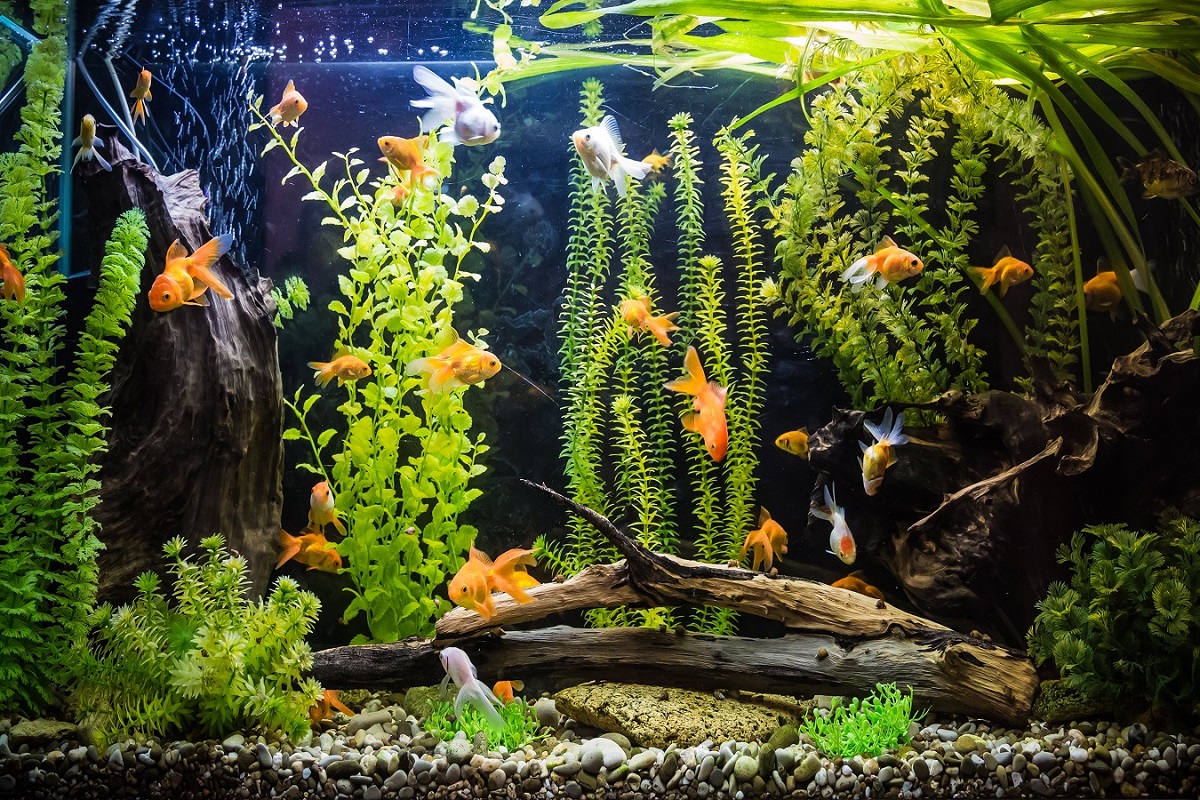It’s a common misconception that all aquariums and tropical fish need heated water to thrive. In fact, there are some fantastic cold water fish you can enjoy with only an unheated tank. While the selection is a little smaller than with classic warm water fish, there are still plenty of beautiful species that you can consider.
The natural room temperature of the average home is perfect for these beauties, too, and the set-up can be a lot less intimidating for first-time aquarium owners.
However, with so many dazzling cold water fish out there, where do you start? We’ve compiled a handy guide to help you make the most of a cold water aquarium setup, so, let’s get started.
Contents
Endler’s Livebearer

Let’s start with the littlest! The Endler’s Livebearer is a nano aquarium fish that’s ideal for coldwater aquariums. They look very similar to guppies but are far smaller, and they swim at all levels of the tank—giving great diversity.
They’re not truly a cold water fish by nature, but they are hardy and robust and do great in room-temperature aquariums.
At a Glance:
- Scientific Name: Poecilia wingei
- Adult Size: 1–1.8 inches
- Difficulty Level: Easy
- Minimum Tank Size: 10 gallons
- Water Temperature: 64–84 °F
Celestial Pearl Danio

This exquisite member of the Danio family, sometimes called a Galaxy Rasbora, is also a nano fish. Unlike the Endler’s livebearer, they prefer to stay at the mid-level of the tank, where you’ll be able to appreciate their dramatic spotted coloration to the fullest.
It’s a peaceful fish that does well in community tanks, but it can be a little timid. For best results, don’t put them with highly active or larger fish species, and let them enjoy a fully planted tank.
At a Glance:
- Scientific Name: Celestichthys margaritatus
- Adult Size: 0.75 inches
- Difficulty Level: Moderate
- Minimum Tank Size: 10 gallons
- Water Temperature: 68–78 °F
Two Spot Barb
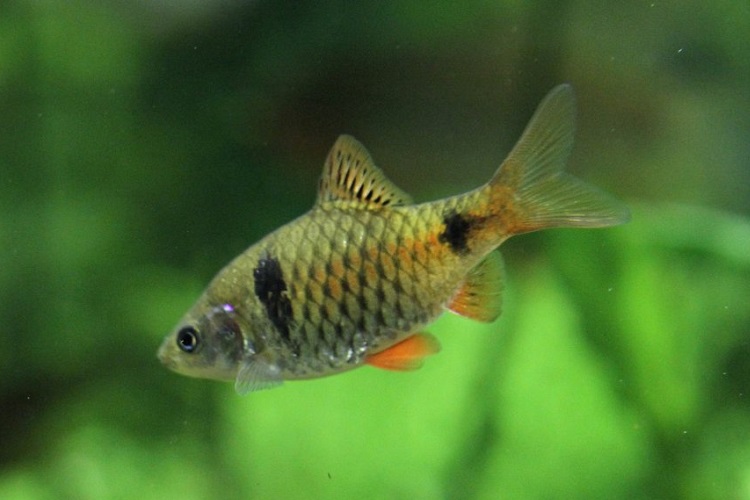
If fed a healthy diet, the male Two Spot Barb can be a bright red and vibrantly dark fish, so load up on flake food, live food, and algae for the best results in this unique Barb.
Despite being classed as a Barb, it has no barbels at all! Its spots sit at its head and tail, with its characteristic silvery body finishing the package.
At a Glance:
- Scientific Name: Puntius bimaculatus
- Adult Size: 2 inches
- Difficulty Level: Easy
- Minimum Tank Size: 20 gallons
- Water Temperature: 71.6–78.8 °F
Paradise Fish
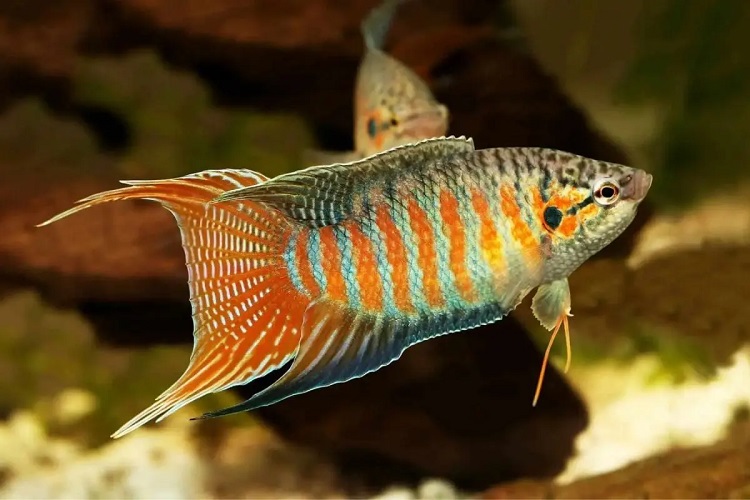
This attractive, but feisty, fish is also known as the Chinese Fighting Fish. It’s not a fish for a mixed tank, and they do well in species-only tanks. However, they can thrive in unheated water, and they bring much of the beauty of a tropical fish to the table with considerably less fuss.
You should keep population sizes to one male and a few females. You’ll find them at the top and mid-levels of your tank.
At a Glance:
- Scientific Name: Macropodus opercularis
- Adult Size: 3 inches
- Difficulty Level: Easy
- Minimum Tank Size: 20 gallons
- Water Temperature: 50–71 °F
Rosy Barb
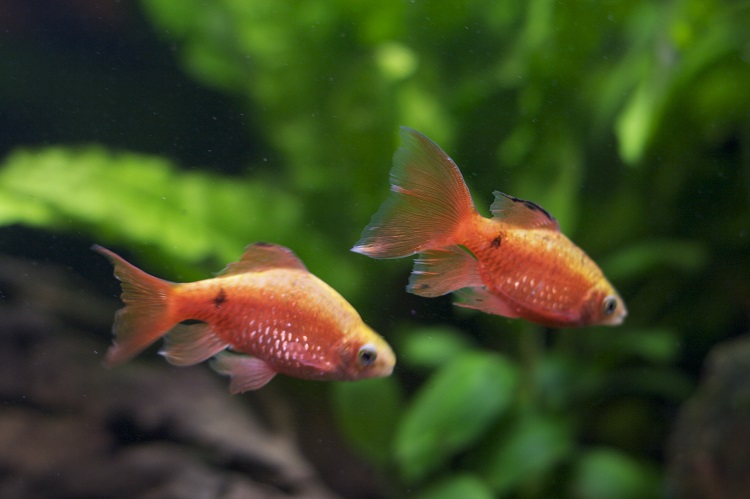
The Rosy Barb makes a great mid-level addition to your tank. Dotted with large and highly reflective scales, there are some beautiful variants of this popular cold-water fish. They’re not the best fish for a planted setup—they do like to chew on leaves—but they look beautiful in a group, school well, and are simple to care for.
With long fin and neon varieties available, they’re a social fish that does well in bigger groups. Plan on at least 10 or more and you’ll be glad you added them to your unheated tank!
At a Glance:
- Scientific Name: Pethia conchonius
- Adult Size: 3 inches
- Difficulty Level: Easy
- Minimum Tank Size: 25 gallons
- Water Temperature: 60–75 °F
Gold Barb
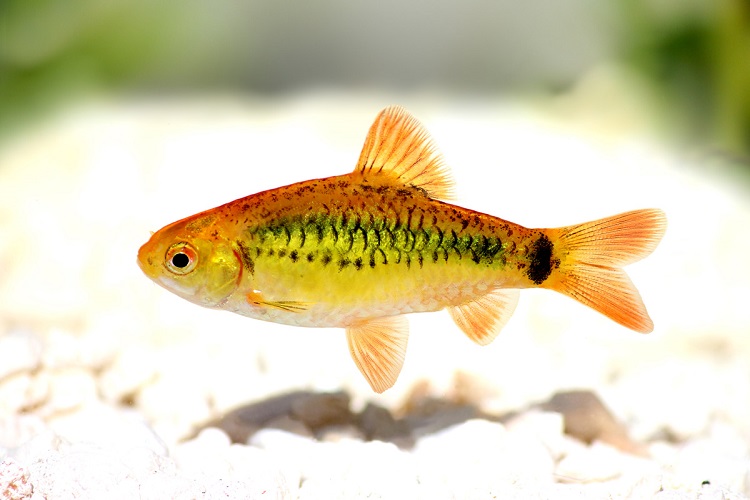
Another lovely cold water fish from this popular family is the Gold Barb—sometimes called the Chinese Barb—and it thrives in cold water tanks. They also thrive in a group, so plan to keep at least 8.
In the wild, the Gold Barb is actually a dull verdigris color, but the varieties bred for tanks are a bold gold with red-leaning fins and eyes and dark splodges for visual variety. There is even a rare albino form available. They are a little aggressive but can be paired with some well-matched species.
At a Glance:
- Scientific Name: Barbodes semifasciolatus
- Adult Size: 2.5–3 inches
- Difficulty Level: Easy
- Minimum Tank Size: 20 gallons
- Water Temperature: 61–75 °F
Bloodfin Tetra

If you’re looking for a swirl of fish in your unheated aquarium, the Bloodfin Tetra is worth having on your radar. With silver bodies and deep red fins, they move in schools at the mid-level of your tank and create a dazzling visual effect. They’re also very hardy fish that are easy to care for, and they tolerate temperature variation very well if you’re in a varying climatic zone.
They are a rather long-lived fish, averaging 5 years (or more), and need at least a small group to thrive. Plan for at least 6—but you will want more! However, they are known fin-nippers, so you need to choose other fish with care.
At a Glance:
- Scientific Name: Aphyocharax anisitsi
- Adult Size: 2 inches
- Difficulty Level: Easy
- Minimum Tank Size: 15 gallons
- Water Temperature: 64–82 °F
Sunset Variatus Platy
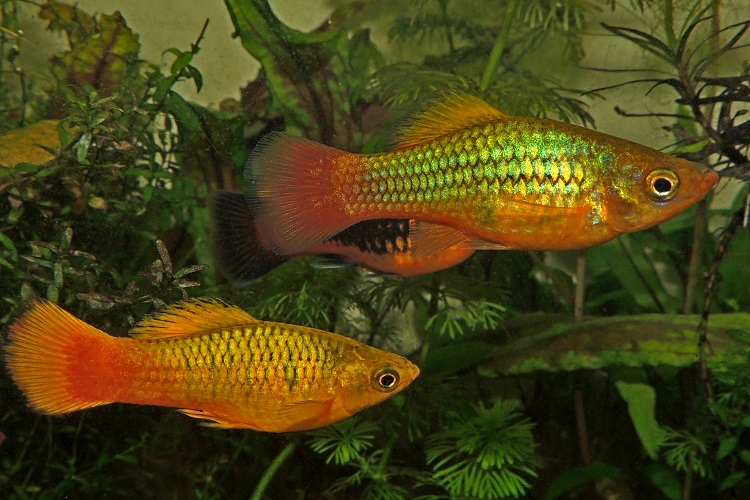
Platies, as they are known, have a long history in aquariums, and this is a fantastic cold water fish for an unheated tank. Dazzling in bright sunset reds and yellows, they’re eye-catching and peaceful fish that will spread through all levels of the tank.
Like most live-bearers, they do like higher pH conditions, so choose their tank companions carefully.
At a Glance:
- Scientific Name: Xiphophorus variatus
- Adult Size: 2–2.8 inches
- Difficulty Level: Easy
- Minimum Tank Size: 15 gallons
- Water Temperature: 68–79 °F
White Cloud Mountain Minnow
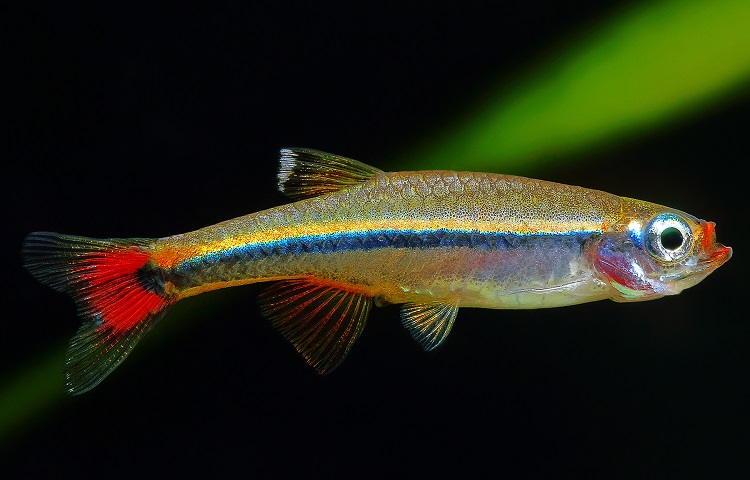
If you’re struggling to decide on a cold water fish, then consider boosting these beauties to the top of your list. A schooling fish that’s also a peaceful tank companion, they frolic and play at the mid-level of the tank in swishing schools.
With a silvery scale set faintly tinged with red, they’re striking. They’re also easy to care for and make a great species for a community tank.
At a Glance:
- Scientific Name: Tanichthys albonubes
- Adult Size: 1.5 inches
- Difficulty Level: Easy
- Minimum Tank Size: 10 gallons
- Water Temperature: 58–72 °F
Zebra Danio
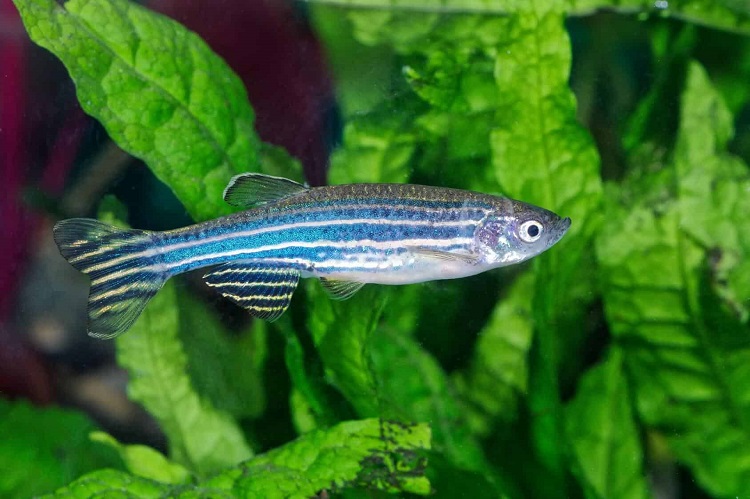
If there was a prize for the most underrated cold water fish, the Zebra Danio would be on the shortlist. Hardy, peaceful, and easy to care for, they’re also active throughout the top and mid-level of the tank.
With striking stripes that continue into the fins and a beautifully contrasting dark body, they’re an eye-catching addition to any community tank.
At a Glance:
- Scientific Name: Brachydanio rerio
- Adult Size: 1.5–2 inches
- Difficulty Level: Easy
- Minimum Tank Size: 10 gallons
- Water Temperature: 70–82 °F
Japanese Rice Fish

Also called the Medaka fish, what the Japanese Rice Fish lacks in color it makes up for in mesmerizing behavior. They’re a nano fish that thrives in a full school, so plan for at least 8 fish in your tank.
If their natural color, stemming from the rice paddies that they’re usually found in, isn’t exciting enough for you, there are some special breeds that are golden, and even a genetically modified neon/glow variety. They will use all the levels of your tank, too.
At a Glance:
- Scientific Name: Oryzias latipes
- Adult Size: 1.5 inches
- Difficulty Level: Easy
- Minimum Tank Size: 10 gallons
- Water Temperature: 64–71 °F
Panda Corydoras
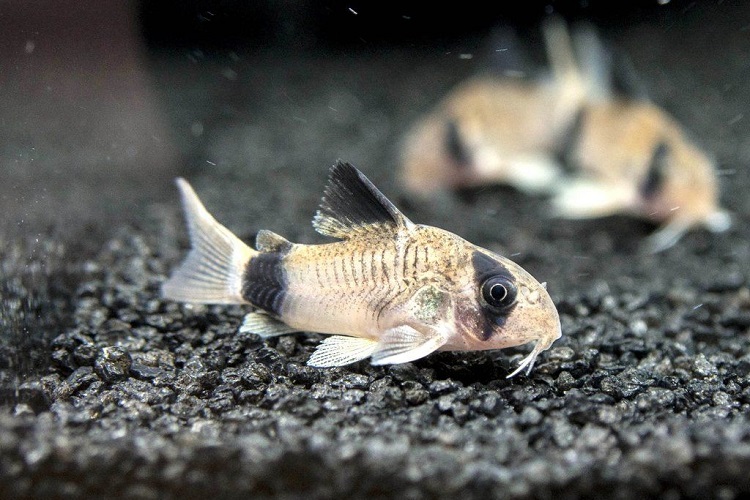
One glance at the name, and we’re sure you’ve guessed their primary color pattern. In bold whites and blacks, with a black eye stripe, they’re a beautiful catfish variant that can work well in cold water aquariums, particularly if you opt for the less fussy commercially bred fish.
Wild-caught fish can be a bit fussier. They’re a social bottom feeder that likes to be in a school, so plan on 6 fish or more. Because they’re also easygoing, they make a good community cold tank choice.
At a Glance:
- Scientific Name: Corydoras panda
- Adult Size: 2 inches
- Difficulty Level: Easy to Moderate
- Minimum Tank Size: 10 gallons
- Water Temperature: 68–77 °F
Guppies

Even if you’re new to keeping fish, we bet you’ve heard of the Guppy before! They’re an exceedingly common pet fish, primarily because they’re both easy to care for and adaptable. They’re a great addition to a cold water fish tank but can do just as well in a standard warm environment with tropical fish.
They also come in a vast array of colors. They’re a live-bearing species, so they produce fry instead of eggs. For community tanks, it’s best to keep only one sex, as live fry will often get eaten and can quickly overpopulate a tank if they don’t. They use all levels of the tank, too, which is always visually attractive.
At a Glance:
- Scientific Name: Poecilia reticulata
- Adult Size: 1–2.5 inches
- Difficulty Level: Easy
- Minimum Tank Size: 10 gallons
- Water Temperature: 63–82 °F
Bristlenose Pleco
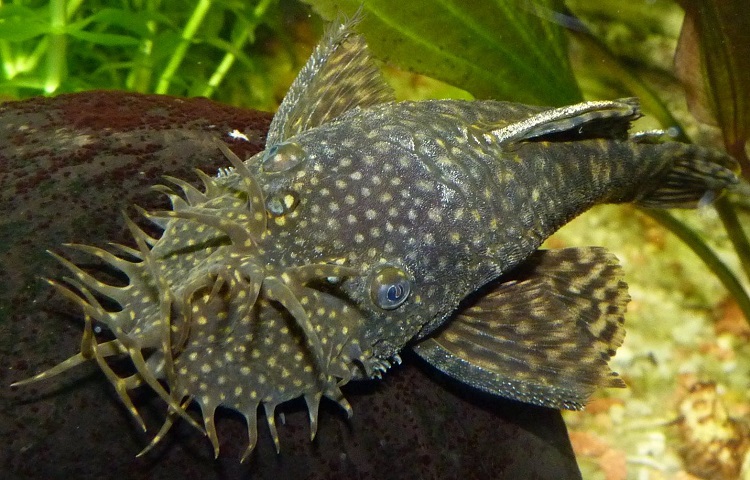
If you’re looking for an unusual and utilitarian fish that will brighten up the bottom of your unheated tank, you’ve found your solution. This algae feeder may need some additional feeding with algae/spirulina wafers or the odd veggie in a busy tank, but they will be well worth it.
Like the Guppy, they can be used in warm water tropical tanks, but do just as well in unheated aquariums. Make sure you have plenty of driftwood in the tank for them to graze on, and you’ll have a happy and unusual addition to your setup.
At a Glance:
- Scientific Name: Ancistrus sp.
- Adult Size: 4–5 inches
- Difficulty Level: Moderate
- Minimum Tank Size: 15 gallons
- Water Temperature: 70–79 °F
Dojo Loach
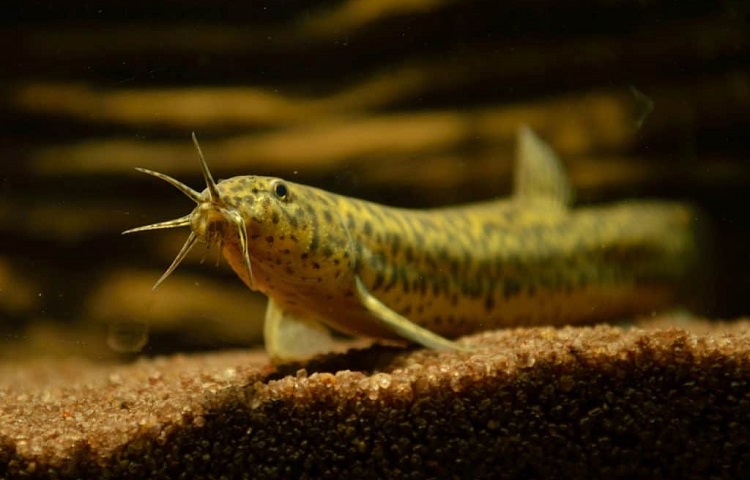
If you’re looking to bring larger fish species into your cold water tank, this strange, but rather adorable, fish is a great choice. It has even been used in Koi ponds.
They stay at the bottom of the tank, bringing some visual interest to this often under-utilized area, and their sweet looks are eye-catching. They’ll also keep you advised of weather changes, as they’re very sensitive to barometric pressure drops.
At a Glance:
- Scientific Name: Misgurnus anguillicaudatus
- Adult Size: 6–12 inches
- Difficulty Level: Easy
- Minimum Tank Size: 55 gallons
- Water Temperature: 59–77 °F
Axolotl
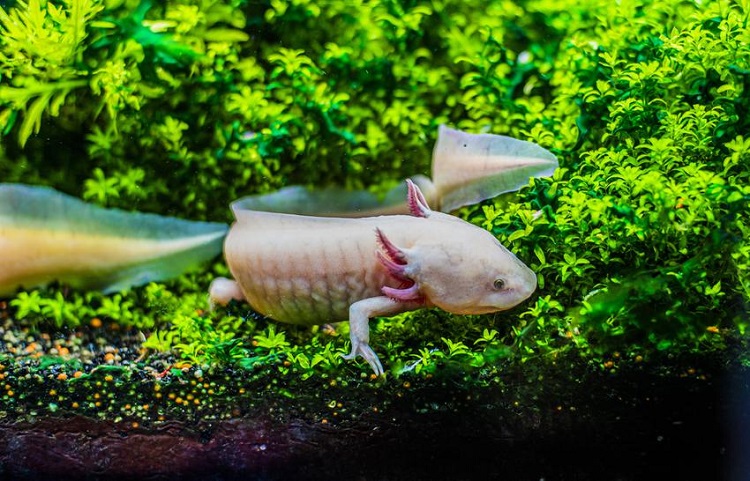
We’re cheating a little with this recommendation because the “Mexican Walking Fish” is actually an amphibian! However, they’re a fantastic addition to a cold freshwater aquarium, and they fit the “so ugly it’s cute” category perfectly. However, while they make an unusual choice for a cold water tank, they’re also pretty aggressive, so you should keep them by themselves.
As a nocturnal species, they do well in low light levels. They’re definitely not a starter choice but are interesting for people looking for a different tank setup.
At a Glance:
- Scientific Name: Ambystoma mexicanum
- Adult Size: 6–12 inches
- Difficulty Level: Moderate
- Minimum Tank Size: 15 gallons
- Water Temperature: 57–68 °F
Fancy Goldfish

Goldfish are some of the most popular pets globally. Sadly, they’re often given far too small tanks and bowls because of this—but with our help, you won’t make that mistake. The Fancy Goldfish is not only a great cold water fish but also a beautiful one.
There are a huge variety of goldfish breeds that get crammed into this category, including some specialty breeds like Bubble-eyes and Orandas, so you can find almost any look or color you want. They stick to the mid-levels of a tank.
At a Glance:
- Scientific Name: Carassius auratus
- Adult Size: 6–8 inches
- Difficulty Level: Moderate (surprisingly)
- Minimum Tank Size: 20 gallons
- Water Temperature: 65–72 °F
Mosquito Fish
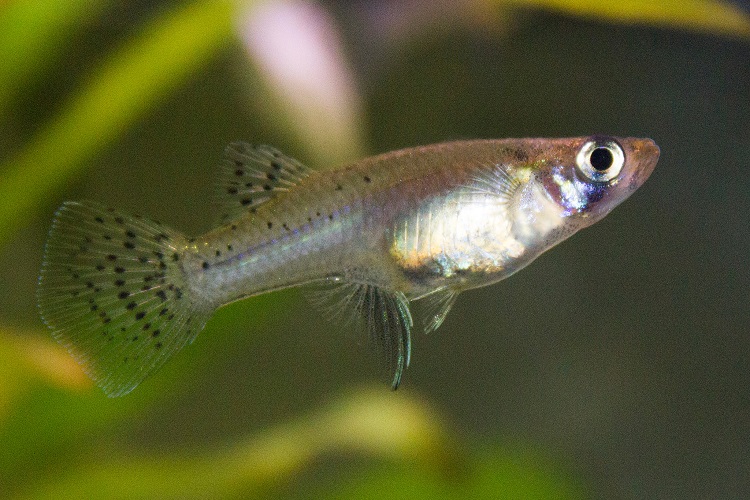
While the name isn’t the prettiest around, this fish acquired its name through its helpful habit of eating mosquito larvae. For this reason, they’re often found in outdoor ponds—but they make a fantastic cold water fish for unheated tanks, too.
They are a known fin-nipper and are pretty aggressive overall, so they don’t play well with all species. However, they’re hardy and something different for a cold nano tank.
At a Glance:
- Scientific Name: Gambusia affinis
- Adult Size: 1.5–2.5 inches
- Difficulty Level: Easy
- Minimum Tank Size: 5 gallons
- Water Temperature: 50–84 °F
Asian Stone Catfish
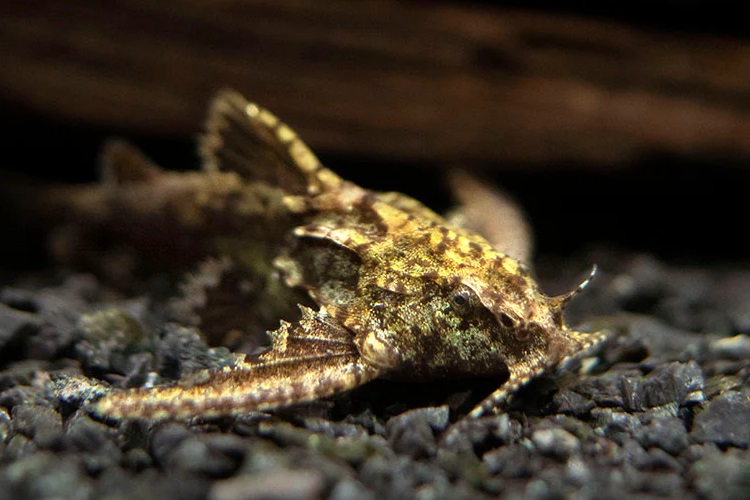
Another unique addition to a cold water tank, this breed is a rather small catfish that’s low in activity level and peaceful in temperament. So, if you’re building a nano tank, this is a great addition to the bottom layers of the tank.
It’s naturally a nocturnal fish and doesn’t do badly in a community tank if everyone else has “good manners” too. However, you may need to do a night feed for this species, as they’re a little clumsy and don’t always compete well for food resources if they have more agile tankmates.
At a Glance:
- Scientific Name: Hara jerdoni
- Adult Size: 1.2 inches
- Difficulty Level: Moderate
- Minimum Tank Size: 10 gallons
- Water Temperature: 64–75 °F
Rosy Red Minnows
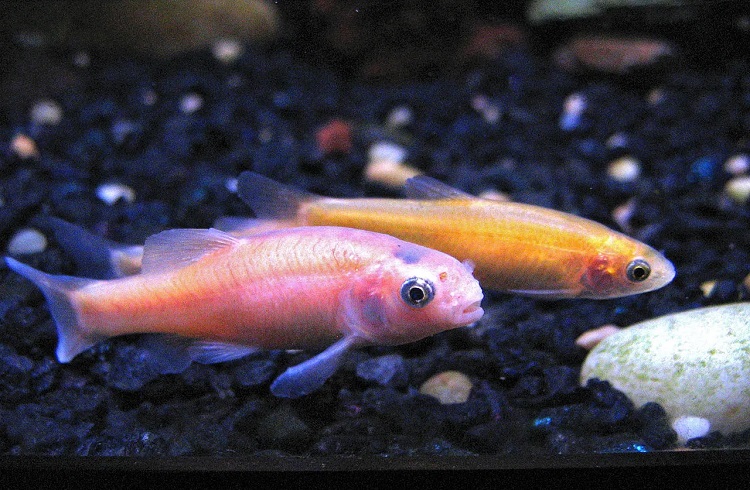
Often thought of as a feeder or bait fish, the Rosy Red Minnow is an underrated cold water fish that can make an interesting addition to an unheated tank. They’re very versatile temperature-wise, and can even be used in outdoor ponds.
They play in the mid-levels of a tank and are a generally peaceful species with a pretty look.
At a Glance:
- Scientific Name: Pimephales promelas
- Adult Size: 3 inches
- Difficulty Level: Easy
- Minimum Tank Size: 15 gallons
- Water Temperature: 50–78 °F
Pygmy Sunfish
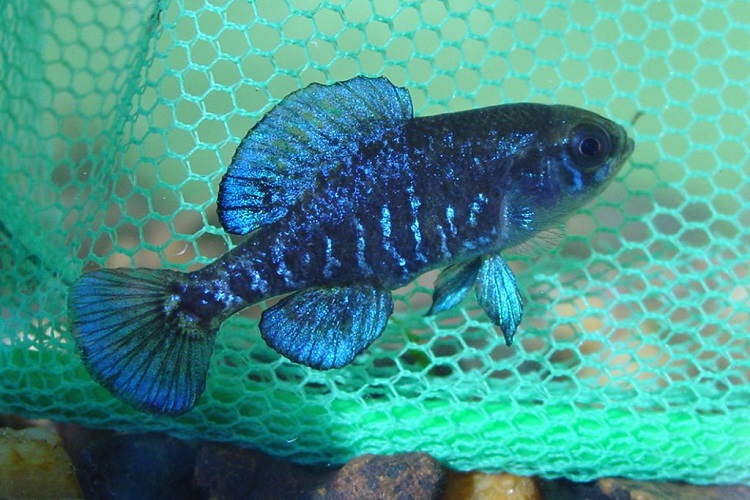
This adorable little fish brings some beautiful black and iridescent blues to your unheated tank if you snag males. You don’t see a lot of them in the US, despite them being a native fish, but they’re very popular in Europe.
They’re a peaceful species, but rather shy in mixed tanks, so pick their partners well. Surprisingly, they’re also a carnivorous species. They’re a great fish to add interest and color to the middle and bottom of your tank.
At a Glance:
- Scientific Name: Elassoma evergladei
- Adult Size: 1.4 inches
- Difficulty Level: Moderate
- Minimum Tank Size: 10 gallons
- Water Temperature: 50–72 °F
Coldwater Tank Setup
Now you have some wonderful cold water fish on your radar, let’s look at their tank in a little more detail. The technical definition of a cold water fish is one that can survive in water temperatures of 70 °F or less, so they tend to stem from temperate and subtropical climates by origin.
The tank setup is relatively hassle-free, provided you’ve chosen the right size for your intended occupants, but here are some tips to make it even smoother.
Filtration
Just because you don’t need a heater doesn’t mean you can leave the tank alone and without care! You will need a good filter system to keep the water quality high and the tank looking lovely.
Air-powered sponge filters are a good choice, because they don’t output any heat, and you can upgrade to an external canister filter if you choose. However, most of the standard tropical filter systems will work. Just keep an eye on the temperature.
Tank Maintenance
Clean tanks look great, and make for happy fish too! Here are some basics you need to cover:
Testing
Keeping fish healthy and happy isn’t all about temperature. You also need to make sure they are in the right type of water (hard/soft) and that the pH level is suitable for the species you’re keeping.
It’s also good to know if ammonia (the byproduct of excess food) and nitrate (the byproduct of dead aquarium plants and fish waste) levels are rising. Aquarium test kits are simple to use, just pick a brand that fits your needed testing parameters.
Water Cleaning
In an ideal system, harmful nitrates and ammonia are removed by healthy plants in the ecosystem. However, you may need to perform a partial water change to reduce nitrate levels.
Remember that the inflowing water needs to be properly conditioned (to remove chemicals) and at the same temperature as the tank. Use a gravel vacuum to clean the tank bottom and drain dirty water, then, slowly add the new water.
Cold water tanks produce less algae than warm water tanks, and if you have algae feeders, it may not be an issue, but the tank may still need the occasional cleaning. The filter may need its filter media to change from time to time, too.
Always use the old tank water to flush the filter media. Over time, beneficial bacteria develop in the filter, and you don’t want to lose them to the chemicals in plain tap water.
5 Key Tips for Cooling Your Coldwater Aquarium
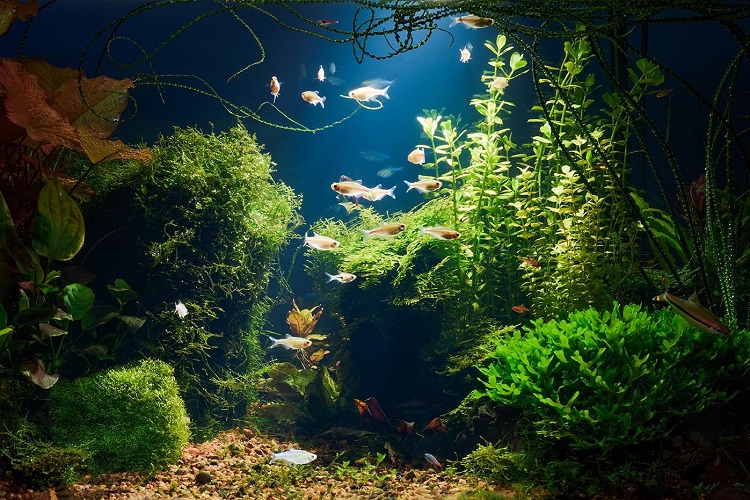
Now you know more about setting up a cold water tank, as well as the different fish that thrive in them, let’s recap the 5 key points you shouldn’t forget about water temperature for your unheated aquarium:
Use a thermometer
In principle, setting up a cold water tank is similar to setting up a tropical tank, just without the heater. However, if you’re in a climate that’s naturally warm all year round, or if you get unusually hot summers, you may need to decrease the water temperature.
So, you should invest in an aquarium thermometer to help you. Some will even alert you when specific temperatures are passed.
Choose the right room or location
Environmentally managing your tank via its location is the simplest (and cheapest) way to keep the water cool and consistent. Keep your tank away from PCs, electronics, fridges, etc. which generate warm air. Make sure it’s also positioned in a cool room and is out of direct sunlight.
Choose the right lighting
If the water is getting too warm, start by turning off any heat-generating electronics that aren’t essential. So, your lights and other items that can be turned off without threatening the life of the fish. Some aquarium lights produce a remarkable amount of heat, so if the tank’s often warm, you may want to invest in LED lighting.
Turn on the A/C
The water is directly affected by the air temperature around it, so your HVAC system or AC will help too.
Cool the water
If all else fails, an aquarium chiller can help you lower the water temperature for your cold water fish. Remember that sudden temperature shocks kill fish, so always reduce temperatures slowly.
FAQ
Still, have some questions about cold water fish? Here are two that we often hear:
Do you need a heater for cold water fish?
No, you don’t need a heater for cold water fish. Unlike tropical fish, they do well in the same temperatures people like, so most thrive at normal room temperature.
Can you have a fish tank without a heater?
Yes, you can have a fish tank without a heater! Provided that you use cold water fish species that thrive in the 50–70 °F temperature range, your natural room temperature will be fine. However, these tanks do need a different setup from a standard tropical tank.
Conclusion
Keeping cold water fish can be just as rewarding as investing in a tropical aquarium, and with a wide range of species open to you, creating a beautiful unheated tank is easier than you may think.
With the right fish, and a regular tank maintenance schedule, you’ll have a beautiful feature for your home and a fascinating new hobby to enjoy.

Ian Sterling, founder of Fishlab.com, began his aquarium journey over 30 years ago, driven by a deep fascination for fish and their diverse personalities. His website, Fishlab.com, is dedicated to making fishkeeping accessible and enjoyable, offering beginner-friendly guidance, expert insights, and a community for aquarists to connect and share experiences.


